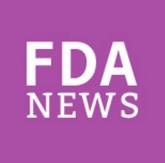News


AT ISPAD 2014
TORONTO – Insulin degludec given once daily was noninferior to insulin detemir in children and adolescents with type 1 diabetes, according to a randomized trial.
The rates of severe, confirmed and nocturnal hypoglycemia were comparable with the two insulins, but hyperglycemia with ketosis was significantly lower in those treated with insulin degludec, compared with insulin detemir.
"Obviously, I don’t need to tell this audience that achieving good glycemic control is a challenge in childhood," said Dr. Nandu Thalange from Norfolk and Norwich (England) University Hospital at the annual conference of the International Society for Pediatric and Adolescent Diabetes.
"We have the twin perils of hypo- and hyperglycemia and, particularly with hyperglycemia, the risks of diabetic ketoacidosis, which in childhood diabetes is the leading cause of death," he said.
Novo Nordisk’s insulin degludec (Tresiba) is a long-acting insulin analogue that has been approved in the European Union and some other places, but was rejected by the U.S. Food and Drug Administration in February 2013 because of cardiovascular concerns. The agent has undergone extensive trials in adults but not in children, and pediatric use is not yet licensed anywhere.
This randomized, controlled, open-label noninferiority trial was designed to generate efficacy and safety data in children and adolescents. A total of 350 children with type 1 diabetes were randomly assigned to either insulin degludec once daily in combination with bolus insulin aspart or insulin detemir once daily or twice daily in combination with insulin aspart.
Eligible participants were aged 1-17 years, were already taking insulin for at least 3 months, were not taking oral antidiabetes drugs, and had hemoglobin A1c values of up to 11%. The primary endpoint was the percentage change from baseline in HbA1c after 26 weeks of treatment.
In a 26-week extension phase designed to gather additional safety and outcomes data, 280 of the original 350 participants were followed for the key secondary outcomes of HbA1c, fasting plasma glucose (FPG), insulin dose, hypoglycemia, hyperglycemia with ketosis, and adverse events. Compliance was monitored via weekly titration of their insulin doses and numerous visits and telephone calls over the study period.
Noninferiority of insulin degludec over insulin detemir at 26 weeks was confirmed for the primary endpoint of HbA1c, with an estimated treatment difference of 0.15 percentage points (P for noninferiority less than .05). This noninferiority was maintained at 52 weeks, when HbA1c was 7.9% in the study arm and 7.8% in the control arm, Dr. Thalange and his coinvestigators reported.
As would be expected in patients on a longer-acting insulin analogue, the mean FPG was 7.8 mmol/L in those treated with insulin degludec, compared with 9.5 mmol/L in the insulin detemir arm.
The incidence and rates of severe hypoglycemia trended higher with insulin degludec than with insulin detemir, at 17.8% and 13.7%, respectively, and 0.51 vs. 0.33 events per 100 patient-years of exposure, albeit without reaching statistical significance. Similarly, rates of severe hypoglycemia (including only episodes of semiconscious/unconscious state and coma with or without convulsions) did not differ significantly between the degludec and detemir groups, at 0.09 and 0.14 events per 100 patient-years of exposure; nor did the occurrence of confirmed nocturnal hypoglycemia differ between groups.
Noting that there were more than 17,000 hypoglycemia events in 1 year among the 350 children enrolled in the study, Dr. Thalange noted, "I think my colleagues treating adults often forget how much hypoglycemia children have."
Rates of hyperglycemia with ketosis were significantly lower in the insulin degludec arm at 0.7, as compared with 0.11 events per 100 patient-years (rate ratio, 0.41).
"As you can see, there was a 59% lower rate of ketosis with hyperglycemia in those treated with insulin degludec, and I think my diabetes nurses would welcome having 60% fewer calls from worried and anxious families."
Other than the higher rate of hypoglycemia seen in the insulin degludec arm, the adverse event profiles were similar for the two agents.
Novo Nordisk sponsored the study. Dr. Thalange reported receiving research support from and being a consultant to Novo Nordisk.

